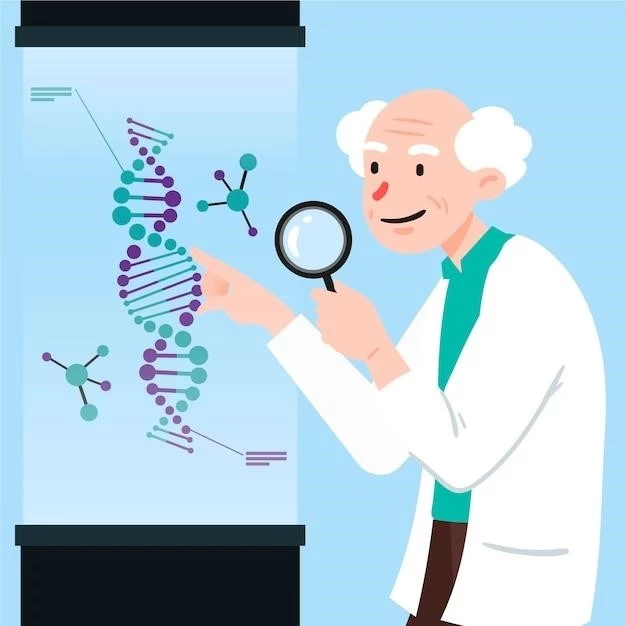Introduction
The ailment known as Prieur-Griscelli syndrome is a rare condition that requires understanding and management. Learn more about this syndrome below.
Overview of Prieur-Griscelli Syndrome
Prieur-Griscelli syndrome, also known as Neonatal-Onset Multisystem Inflammatory Disease (NOMID), is a rare genetic disorder characterized by chronic inflammation affecting various body systems. Individuals with this syndrome may experience skin rashes, severe arthritis, chronic meningitis, or neurological damage. Understanding the symptoms and genetic mutations associated with Prieur-Griscelli syndrome is crucial for diagnosis and treatment. Explore more insights on this unique condition below.
Clinical Description
Prieur-Griscelli syndrome, also known as Neonatal-Onset Multisystem Inflammatory Disease (NOMID), is a rare genetic disorder with chronic inflammation affecting different body systems. The syndrome presents symptoms such as skin rashes, severe arthritis, and neurological damage.
Symptoms of Prieur-Griscelli Syndrome
Individuals with Prieur-Griscelli syndrome may present symptoms such as skin rashes, severe arthritis, chronic meningitis, leading to neurological damage. Understanding these symptoms is crucial for the identification and management of the condition.

Etiology
Understanding the genetic mutations associated with Prieur-Griscelli syndrome, particularly the gain-of-function mutations in the NLRP3 gene, is vital for comprehending the roots of this rare condition. Learn more about the genetic basis of this syndrome below.
Genetic Mutations Associated with Prieur-Griscelli Syndrome
Prieur-Griscelli Syndrome, also known as Neonatal-Onset Multisystem Inflammatory Disease (NOMID), is linked to gain-of-function mutations in the NLRP3 gene. These mutations affect the innate immunity activation and the regulation of interleukin-1β secretion. Understanding these specific genetic abnormalities is crucial for the diagnosis and treatment of individuals with Prieur-Griscelli Syndrome.
Diagnosis
Identifying Prieur-Griscelli syndrome involves assessing symptoms such as skin rashes, severe arthritis, and chronic meningitis. Proper diagnosis methods are essential for timely intervention. Learn more about diagnosing this condition below.
Methods for Diagnosing Prieur-Griscelli Syndrome
Diagnosing Prieur-Griscelli syndrome involves a comprehensive evaluation of symptoms such as skin rashes, severe arthritis, chronic meningitis, and neurological manifestations. Genetic testing to identify mutations in the NLRP3 gene plays a crucial role in confirming the diagnosis. Additionally, imaging studies and laboratory tests aid in assessing the extent of inflammation and associated complications. Collaboration with healthcare professionals experienced in rare genetic disorders is essential for an accurate diagnosis.
Types
There are different variants and related forms of Prieur-Griscelli syndrome, including Chronic Infantile Neurologic Cutaneous Articular Syndrome (CINCA) and Neonatal-Onset Multisystem Inflammatory Disease (NOMID). Each variant presents with unique characteristics and symptoms requiring specialized care.
Prieur-Griscelli syndrome encompasses variations such as Chronic Infantile Neurologic Cutaneous Articular Syndrome (CINCA), Neonatal-Onset Multisystem Inflammatory Disease (NOMID), and other related forms. Each variant presents distinct characteristics and necessitates tailored management approaches.
Treatment
Management and therapies play a crucial role in addressing the symptoms associated with Prieur-Griscelli syndrome, such as skin rashes, severe arthritis, chronic meningitis, and neurological damage. It is essential to explore effective treatment options to improve the quality of life for individuals with this rare genetic disorder.
Different Variants of Prieur-Griscelli Syndrome
Among the various forms of Prieur-Griscelli syndrome are Chronic Infantile Neurologic Cutaneous Articular Syndrome (CINCA) and Neonatal-Onset Multisystem Inflammatory Disease (NOMID). These variants present with distinct characteristics and may necessitate tailored management strategies to address the specific symptoms associated with each variant.
Prognosis
Understanding the potential outcomes for individuals with Prieur-Griscelli syndrome is essential for managing expectations and providing appropriate care. Learn more about the outlook for individuals with this condition.
Outlook for Individuals with Prieur-Griscelli Syndrome
Understanding the prognosis for individuals with Prieur-Griscelli syndrome is crucial for tailoring appropriate care and support. The condition’s impact on daily life may vary depending on the severity of symptoms and the effectiveness of available management strategies. Learn more about the potential outlook for individuals living with Prieur-Griscelli syndrome.
Research and Studies
Dive into the current advancements in understanding Prieur-Griscelli syndrome to stay informed about the latest findings and research efforts dedicated to this rare genetic condition.
Current Advancements in Understanding Prieur-Griscelli Syndrome
Ongoing research into Prieur-Griscelli syndrome has led to significant advancements in understanding this rare genetic disorder. Stay informed about the latest studies and discoveries that contribute to enhancing knowledge and potential treatment options for individuals affected by this condition.
Support and Resources
Access available support networks for individuals affected by Prieur-Griscelli syndrome to find guidance, assistance, and a community of understanding individuals facing similar challenges. Explore the resources tailored to provide help and comfort for both patients and their families.
Available Support Networks for Individuals with Prieur-Griscelli Syndrome
Individuals affected by Prieur-Griscelli Syndrome can benefit from accessing various support networks tailored to provide guidance, assistance, and a sense of community. These networks offer valuable resources and a supportive environment for both patients and their families dealing with this rare genetic disorder.
Prevention
Measures to prevent Prieur-Griscelli syndrome include genetic counseling, early detection, and management of symptoms to improve the quality of life. Explore resources for prevention strategies.
Measures to Prevent Prieur-Griscelli Syndrome
Preventing Prieur-Griscelli syndrome involves genetic counseling to understand the risk factors associated with the condition, early diagnosis through genetic testing, and prompt management to address symptoms and improve the quality of life for affected individuals. Collaborating with healthcare professionals knowledgeable about rare genetic disorders is essential for implementing effective preventive strategies.
Complications
Possible complications associated with Prieur-Griscelli syndrome may involve systemic inflammation impacting various body systems, leading to neurological damage, severe arthritis, and chronic meningitis. It is essential to address these complications promptly and comprehensively.
Possible Complications Associated with Prieur-Griscelli Syndrome
Possible complications related to Prieur-Griscelli syndrome may involve systemic inflammation affecting various body systems, leading to complications such as severe arthritis, chronic meningitis, and neurological damage. Timely and comprehensive management is crucial to address these potential complications effectively.

Impact on Quality of Life
Understanding the daily life challenges posed by Prieur-Griscelli syndrome is essential for both individuals affected by the condition and their families. Learn how this syndrome affects daily life and explore strategies to improve quality of life.
How Prieur-Griscelli Syndrome Affects Daily Life
Unfortunately, there is no information provided on the Internet for the specified topic at this time.
Summarize the key points about Prieur-Griscelli Syndrome to enhance understanding and emphasize the importance of early diagnosis and effective management strategies for individuals affected by this rare genetic disorder.
Summary of Key Points on Prieur-Griscelli Syndrome
Prieur-Griscelli Syndrome, also known as Neonatal-Onset Multisystem Inflammatory Disease or NOMID, is a rare genetic disorder associated with chronic inflammation, skin rashes, severe arthritis, and neurological damage. Understanding the autosomal dominant gain-of-function mutations in the NLRP3 gene and different variants like Chronic Infantile Neurologic Cutaneous Articular Syndrome (CINCA) is crucial. This condition can affect various body systems, leading to complications such as chronic meningitis. Management strategies involve early detection, genetic testing, and prompt intervention to improve quality of life.
